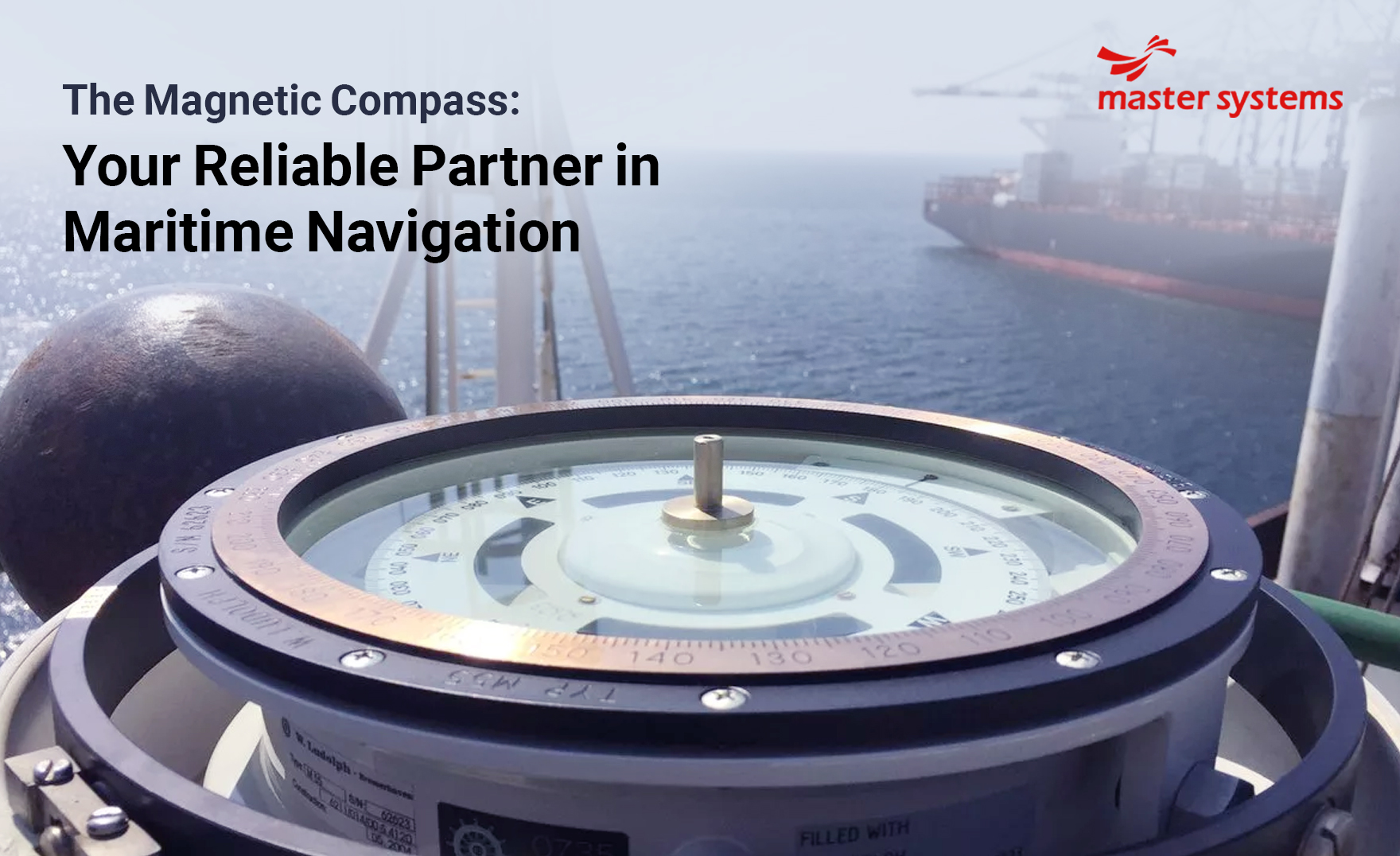Magnetic Compass Adjustment: A Comprehensive Guide for Mariners
For centuries, the magnetic compass was the loyal guide that led a number of explorers to new shores, ushering thousands of fearless sea voyages into the unknown. This understated yet impactful tool played a pretty decent role in shaping maritime history for a long, long time, perpetually safeguarding the course of ships, even in the most challenging of waters.
But in today’s era of GPS and advanced navigation systems, is the magnetic compass still relevant? It might sound a little absurd. But yes, it is!
Mariners rely on it as a dependable backpack for a solo traveler. Accurate magnetic compass adjustment is essential for safe navigation in the sea to minimize errors caused by magnetic compass deviation—a common issue navigators come across on a daily basis in ships mostly influenced by surrounding magnetic fields.
In this comprehensive guide, we’ll discuss more on magnetic compasses, their different types, and why proper magnetic compass adjustment is vital for modern-day sea voyages.
Get ready to set sail!
What Is a Magnetic Compass, and How Does It Work?
A magnetic compass is a primary navigational tool that uses Earth’s magnetic field in order to determine the direction to take the voyage. Its central element is a magnetized needle, which is basically mounted on a pivot and therefore allows free rotation. This needle aligns with Earth’s magnetic field lines and consistently points toward the magnetic north pole.
Mariners rely on magnetic compasses for all kinds of navigation in the seawater, especially when electronic systems fail. It supports setting courses, maintaining headings, and, above all, allows navigation through poor visibility conditions. However, the compass may be sensitive to environmental factors like Earth’s varying magnetic field and nearby metallic objects and therefore by far requires adjustments from time to time in order to maintain accuracy in determining which course of the journey to take to reach the desired destination.
How Does a Magnetic Compass Relate to Earth’s Magnetic Field?
The Earth’s magnetic field, generated mainly by molten iron movements within its core, usually functions like a giant magnet encircling the planet. This magnetic force aligns a compass needle along the north-south axis when suspended or floated on water.
The magnetic compass points toward Earth’s magnetic north, corresponding to the compass’s “south” magnetic pole due to opposite magnetic attraction. While Earth’s magnetic poles shift gradually, the movement is slow enough to . show that the compass is in a favourable condition.
How Do Ship Structures Affect Compass Accuracy at Sea?
A ship’s structure can significantly influence the accuracy of the compass in use due to its magnetic properties. Ships built with iron and steel mainly tend to develop three types of magnetism, namely:
- Permanent Magnetism: Natural magnetism from the ship’s metallic structure.
- Sub-Permanent Magnetism: Magnetism acquired over time through continuous exposure to Earth’s magnetic field.
- Induced magnetism: Temporary magnetism generated by the ship’s position relative to Earth’s magnetic field.
These factors create deviation errors, affecting the features like reliability of the compass. Adjustments using compensating magnets and correctors are also essential to maintain precise navigation. Correctly calibrated compasses ensure accurate positioning, route adjustments, and obstacle avoidance, even when visual navigation is impossible.
Understanding Variation and Deviation in Magnetic Compasses
- Variation: This term refers to the angle between geographic north (true north) and magnetic north. Since Earth’s magnetic field changes by location, the compass needle may deviate from true north. Mariners must account for this offset, which also shifts over time.
- Deviation: This refers to compass errors caused by magnetic influences within the ship itself. Deviation varies with the ship’s heading, increasing and decreasing as the ship turns. The steering compass, located inside the pilothouse, experiences more deviation due to nearby magnetic materials, while the standard compass, placed on the deck, is less affected.
Mariners are supposed to correct both variation and deviation to make sure accurate navigation and to maintain a safer passage through the open seas.
Different Magnetic Compasses Available from the Master System
Master System, a magnetic compass supplier in UAE offers a range of high-quality magnetic compasses.
Reflector Compasses
- SR-165
The SR-165 is a premium Class A reflector magnetic compass designed for sea navigation, meeting IMO/MED standards. Its 165mm card, built with platinum-iridium and sapphire pivot bearings, affirms long-lasting performance. The binnacle stand supports full magnetic correction with built-in quadrantal correctors, Flinders bars, and heeling error compensators. Its periscope extends to 680mm ±35mm, allowing for an easy and flexible installation. With dual power dimmer control (24VDC & 220VAC) and a durable, liquid-expansion-absorbing compass bowl, the SR-165 is an excellent choice for maritime professionals.
- MR-150
The MR-150 Reflector Compass features a 150mm card and a robust binnacle stand with a top cover, giving durability in harsh maritime environments. Its 680mm ±35mm periscope and 24VDC dimmer control provide enhanced visibility. Magnetic correction is supported through B, C, heeling error compensators, and Flinders bars. With type approval from DOT and RRR, the MR-150 is built for reliable navigation.
- MR-165C
The MR-165C Reflector Compass offers a large 165mm card, a sturdy binnacle stand, and periscope optics extending to 680mm ±35mm. It features dual current dimmer control (24VDC & 220VAC) for optimal illumination and magnetic correction systems, including B, C, heeling, and quadrantal correctors. Approved by CCS, the MR-165C confirms exactness and dependability in marine navigation.
- S-165III
The S-165III is a dependable binnacle stand compass featuring a 165mm card and a durable top cover. Its advanced deviation correction system includes magnetic correcting magnets, quadrantal correctors, and Flinders bars. With dimmer control for both 24VDC & 220VAC and type approval from DOT and RRR, the S-165III is an ideal choice for professional sea navigation.
Steering Compasses
1. T-150IIF
The T-150IIF Steering Compass features a large 150mm card with bottom illumination, ensuring clear visibility even in low-light conditions. Its sturdy design, with dimensions of W 460mm, D 288mm, H 390mm, and a weight of 11 kg, makes it suitable for various maritime applications. It meets DOT and RRR certification standards, guaranteeing precise navigation at sea.
2. T-130VD
The T-130VD comes with a 130mm card and bottom illumination for easy readability. Its compact dimensions of W 430mm, D 230mm, H 352mm, and a weight of 6.3kg make it lightweight and practical for ship installations. Certified by DOT and RRR, it is built for accuracy and dependable performance.
3. T-130VF
With a 130mm card and bottom illumination, the T-130VF is designed for optimal visibility and precision. Measuring W 430mm, D 250mm, H 352mm, and weighing 6.3kg, it offers a balance of reliability and convenience. Its DOT and RRR certifications ensure professional-level navigation capabilities.
4. T-130VB
The T-130VB model features a 130mm card with top illumination, enhancing visibility even under challenging conditions. Its compact dimensions (W 430mm, D 250mm, H 352mm) and lightweight design (6.3kg) make it an excellent choice for ship steering systems. It meets RRR certification standards, reflecting its quality and performance.
Boat Compasses
- B-75S
The B-75S Wooden Box Compass features a 75mm card and comes with built-in card lighting for night navigation. Its compact box measures 163mm square by H 73mm and weighs 1.3kg. Its classic wooden design makes it ideal for small boats and traditional vessels.
- B-100S
The B-100S model offers a 100mm card with card lighting, ensuring clear readings in low-light conditions. Its wooden box measures 203mm square by H 110mm and weighs 2.2kg, providing both durability and a timeless appearance for maritime enthusiasts.
- B-130S
With a 130mm card and built-in lighting, the B-130S is perfect for precise navigation. Its sturdy wooden box measures 230mm square by H 120mm and weighs 3.0kg, combining reliability with a classic marine aesthetic.
- B-150N
The B-150N Wooden Box Compass boasts a large 150mm card with card lighting for superior readability. Its spacious wooden box measures 277mm square by H 145mm and weighs 5.9kg, making it a robust and durable navigation tool for traditional and modern boats.
- P-75L
The P-75L Brass Binnacle Compass features a 75mm card with lighting options of 3, 12, or 24VDC. Its brass binnacle measures 173 mm in diameter and H 190 mm, weighing 1.3 kg. Its classic look and dependable performance make it ideal for both functional and decorative maritime use.
- P-100S
With a 100mm card and 24VDC card lighting, the P-100S delivers precise navigation. Its brass binnacle measures 206mm in diameter and H 245mm, with a weight of 2.2kg, combining practical functionality with a traditional nautical design.
- P-130S
The P-130S Brass Binnacle Compass features a large 130mm card and 24VDC card lighting, ensuring excellent readability. Its sturdy brass binnacle measures 248mm in diameter by H 260mm, weighing 3.0kg, offering long-lasting durability and timeless appeal.
- P-150N
The P-150N model boasts a 150mm card with 24VDC card lighting for clear visibility. Its brass binnacle measures 294mm in diameter and H 305mm, weighing 5.9kg. Its robust design and classic maritime style make it a top choice for serious seafarers and collectors alike.
By understanding the magnetic compass’s function and correcting influencing factors, mariners can navigate confidently, even when modern technology is unavailable. Master System, a trusted provider of marine magnetic compass UAE, ensures accurate and reliable navigation solutions. For high-quality magnetic compass UAE, choose Master System and sail with confidence.


